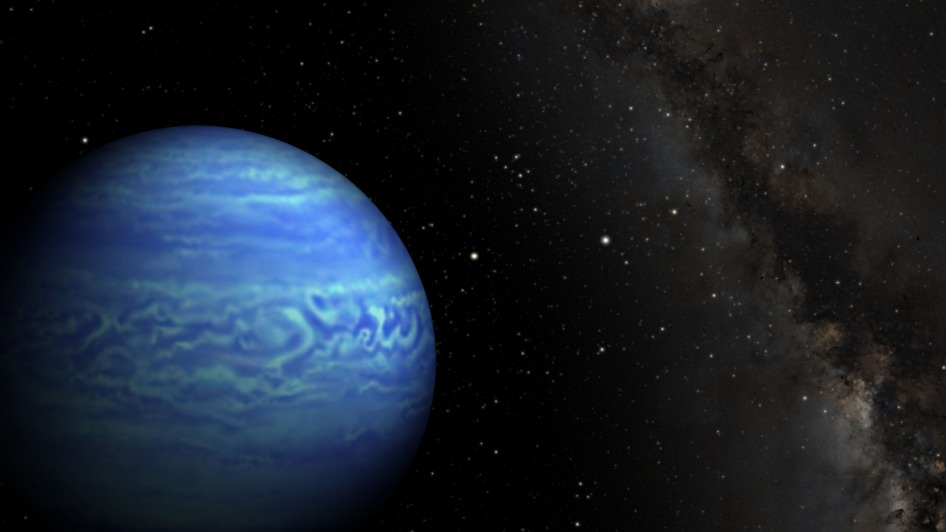Our stellar neighborhood just got a little busier … and a little colder.
A brown dwarf that’s as frosty as the Earth’s North Pole has been discovered lurking incredibly close to our Solar System. Astronomer Keven Luhman from Pennsylvania State University used NASA’s Wide-field Infrared Survey Explorer (WISE) and the Spitzer Space Telescope to pinpoint the object’s temperature and distance. This is the coldest brown dwarf found so far, and it’s a mere 7.2 light-years away, making it the seventh closest star-like object to the Sun.
“It is very exciting to discover a new neighbor of our Solar System that is so close,” said Luhman in a press release.
Brown dwarfs emerge when clouds of gas and dust collapse. But unlike stars, they never grow dense enough or burn hot enough to ignite nuclear fusion in their cores. They live their lives less massive than stars, but more massive than gas giants. So they burn hot at first, then cool over time. And this newly discovered brown dwarf is as cold as ice. Literally.
WISE surveyed the entire sky twice in its short 14-month lifetime, looking at cooler objects, which radiate in infrared light (but often remain invisible in visible light). It saw cold asteroids, dust clouds, proto-planetary disks, distant galaxies and hundreds of brown dwarfs.
But one of these objects — dubbed WISE J085510.83-071442.5 — was moving rapidly, suggesting it was extremely close to the Solar System. All stars orbit around the Milky Way, with apparent motions seen on the timescale of hundreds of years. Stars close to the Sun, however, can be seen to make the slightest of movements on the timescale of just a few years. This object appeared to move in just a few months.

After first spotting this wacky object in the WISE data, Luhman analyzed additional images taken with the Spitzer Space Telescope and the Gemini South Pole Telescope in Chile. The combined detections taken from different positions around the Sun enabled the measurement of the objects parallax — the apparent position of the object against a background set of stars as seen along multiple lines of sight — allowing Luhman to determine the objects distance.
Spitzer’s additional observations helped pin down the objects chilly temperature, which can be determined based on how much light it gives off in different colors. Like a flame, the hottest part is blue, while the coldest part is red. Luhman found the brown dwarfs temperature to be between –54° and 9° Fahrenheit (–48° to –13° Celsius). Previous record-holders for the coldest brown dwarfs were about room temperature.
“It is remarkable that even after many decades of studying the sky, we still do not have a complete inventory of the Sun’s nearest neighbors,” said Michael Werner from NASA’s Jet Propulsion Laboratory. “This exciting new result demonstrates the power of exploring the universe using new tools, such as the infrared eyes of WISE and Spitzer.”
With a stretch of the imagination and advanced technology, it’s possible that other cooler objects, be them brown dwarfs of even rogue exoplanets, are yet closer to the Sun.
The paper will be published in the Astrophysics Journal and is available for download here.


For reference, Jupiter is below -140C at the cloudtops (Universe Today: http://www.universetoday.com/15097/temperature-of-jupiter/ ) and -160C if you measure using only the spectrum (http://en.wikipedia.org/wiki/Effective_temperature).
So although water would freeze on the “surface” of its atmosphere, there’s probably not much water there but only hydrogen. Further down, it could be hotter, perhaps with clouds and storms of water and other molecules.
Since the temperature of the star is too low for it to have a reddish glow, its naked-eye coloration would be determined by the molecular composition of its clouds, like Jupiter. However this would be only dimly illuminated by the Milky Way, since no star is nearby to shine on it. Auroras and electrical storms probably shine from the murky clouds.
So is it a brown dwarf or a rogue planet?